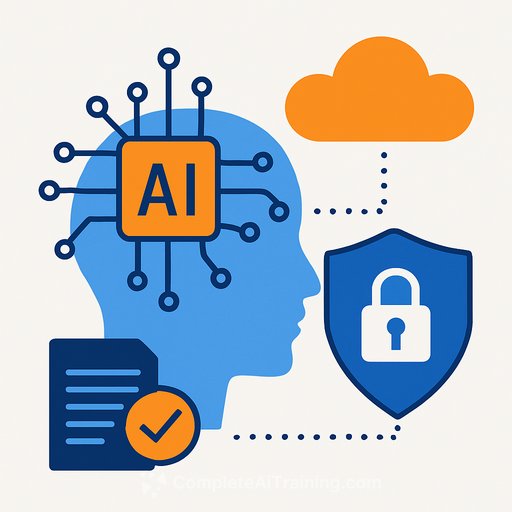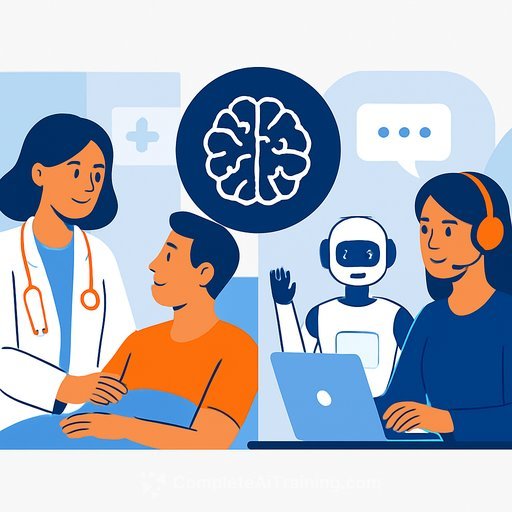Governance of AI in Pediatric Healthcare: What Clinicians Need Now
AI is moving into clinical workflows, but pediatrics lags in both adoption and governance. The risks are different for children, the data are thinner, and the consequences of error are heavier. This piece lays out where we stand, what's missing, and what to do next-so you can make safer, smarter decisions about AI in your setting.
Why children need a different playbook
Children aren't small adults. Physiology, cognition, and social context change quickly across infancy, childhood, and adolescence. That variability creates shifting data distributions that can break models trained on adults-or even on a narrower pediatric age band.
Consent adds layers. Parents or guardians consent, but children may provide assent depending on maturity. Families also expect transparency: surveys show most parents want to know when AI informs a clinical decision. Privacy stakes are higher too; breaches can follow a child for decades.
Data is scarce. Many pediatric conditions are rare on a per-condition basis. That means smaller datasets, slower accrual, and more need for collaboration, privacy-preserving learning, and careful validation. And because errors can remove years of quality life, the tolerance for model failure should be low.
What FDA-cleared tools tell us about pediatric AI today
A review of FDA-cleared Software as a Medical Device (SaMD) explicitly indicated for pediatric use identified 189 unique submissions. Submissions grew sharply after 2020, signaling momentum-but also the need for stronger oversight.
- Specialty skew: ~80% are radiology. Neurology ~8%, cardiovascular ~5%. Other specialties barely register. This signals overconcentration in imaging and missed opportunities elsewhere.
- Regulatory pathway: 97.4% used 510(k); 2.6% were De Novo. Most were reviewed by Radiology committees, echoing the specialty imbalance.
- Intended use: Weighted by multi-purpose devices, 83.9% are diagnostic, 8.7% monitoring, 2.6% treatment planning, 1.9% therapeutic.
- Geography: The U.S. leads (103), followed by Japan (14) and South Korea (12).
Pattern to note: radiology is overwhelmingly diagnostic; cardiovascular tools lean monitoring; neurology splits between diagnosis and monitoring. This isn't a mature ecosystem-it's a narrow slice.
For context on AI/ML-enabled devices, see the FDA's device list here.
Where current governance falls short
- Limited adoption of guidance: Many frameworks are high-level, adult-focused, or invisible to clinicians and builders. Pediatric specifics are sparse.
- Weak stakeholder inclusion: Clear playbooks for involving children, caregivers, and multidisciplinary teams are rare-and rarely funded.
- Bias mitigation is thin: Single-site studies dominate, and diverse pediatric datasets are hard to share. Methods like federated learning see limited real use in pediatrics.
- Overemphasis on protection, underemphasis on access: Strong privacy is essential, but a "do nothing" stance leaves children behind.
- Accountability gaps: Many tools fall outside FDA oversight. Post-deployment monitoring is inconsistent, even where plans exist on paper.
- Few incentives: Ethical pediatric AI is harder and slower. Funding, recognition, and reimbursement often don't match the effort.
A practical test for any pediatric AI
Use this three-question check before you build or buy:
- Is it true? Is the dataset representative for the target age ranges and settings? Are accuracy and calibration reported by site, age band, and subgroup? Is there a local monitoring plan to catch drift?
- Is it good? Does it improve outcomes that matter to children and families? Are privacy, fairness, and explainability addressed in plain language for clinicians and caregivers?
- Is it wise? Were children (when appropriate), caregivers, clinicians, and ethicists involved? Is there a clear route to raise concerns and roll back the model if harm surfaces?
For child-centered principles, UNICEF's policy guidance on AI for children is a useful reference point here.
Policy actions (national/government)
- Fund multi-center, diverse pediatric datasets under strict privacy and security controls; support privacy-preserving model development to avoid centralized data hoards.
- Create incentive structures for high-quality pediatric AI research, similar in spirit to pediatric drug regulations that improved labeling and access.
- Standardize evaluation metrics that reflect developmental differences and pediatric physiology.
- Promote stakeholder participation (children where appropriate, caregivers, pediatric clinicians) in national guidance and grant criteria.
- Offer adaptive regulatory routes for high-need pediatric tools beyond the 510(k) predicate path, while preserving safety and effectiveness.
- Ensure equitable access so benefits do not cluster in high-resource systems only.
Operational actions (institutions and health systems)
- Mandate stakeholder involvement in design and testing, including caregiver and youth advisory input with developmentally appropriate materials.
- Require external validation prior to broad rollout; evaluate by site, unit, age band, and key subgroups.
- Adopt Good Machine Learning Practices and continuous monitoring with clear ownership, alerting, and rollback procedures.
- Use explainability and decision support that clinicians can interpret; disclose AI use to families in plain language.
- Run translational pilots and, when feasible, randomized trials; publish performance and post-deployment findings.
- Build auditable logs for data access, model updates, and outcomes; conduct regular bias and safety reviews.
- Invest in AI literacy for clinicians and operational leaders so recommendations are questioned, not blindly accepted.
How to get started this quarter
- Inventory: List all AI-driven tools touching pediatric care, including embedded EHR features. Note intended use, age bands, oversight, and monitoring plans.
- Risk triage: Prioritize high-impact decisions (diagnostics, triage, dosing) for rapid review using the "true, good, wise" test.
- Governance basics: Name an accountable owner per model. Establish a monthly review that checks drift, subgroup performance, and incidents.
- Family transparency: Draft a one-page explainer for caregivers on where AI is used and how decisions are overseen. Pilot it in one clinic.
- Bias check: Add a simple fairness dashboard: performance by age band, sex, race/ethnicity, payer type, and site.
- Data pathway: For any new build, choose a privacy-preserving training approach (e.g., federated learning) and line up multi-site data-sharing agreements early.
- Training: Run a short session for frontline teams on model limits, uncertainty, and human-in-the-loop practices. If you need structured curricula, consider role-based options here.
Bottom line
Pediatric AI will keep growing. Without better governance, the benefits will be concentrated, and the risks will fall on those least able to absorb them.
Build for truth, goodness, and wisdom. Involve families. Share data responsibly. Monitor in the real world. And make sure the value shows up where it matters: safer care, earlier answers, and better long-term outcomes for children.
Your membership also unlocks:






